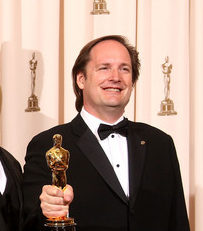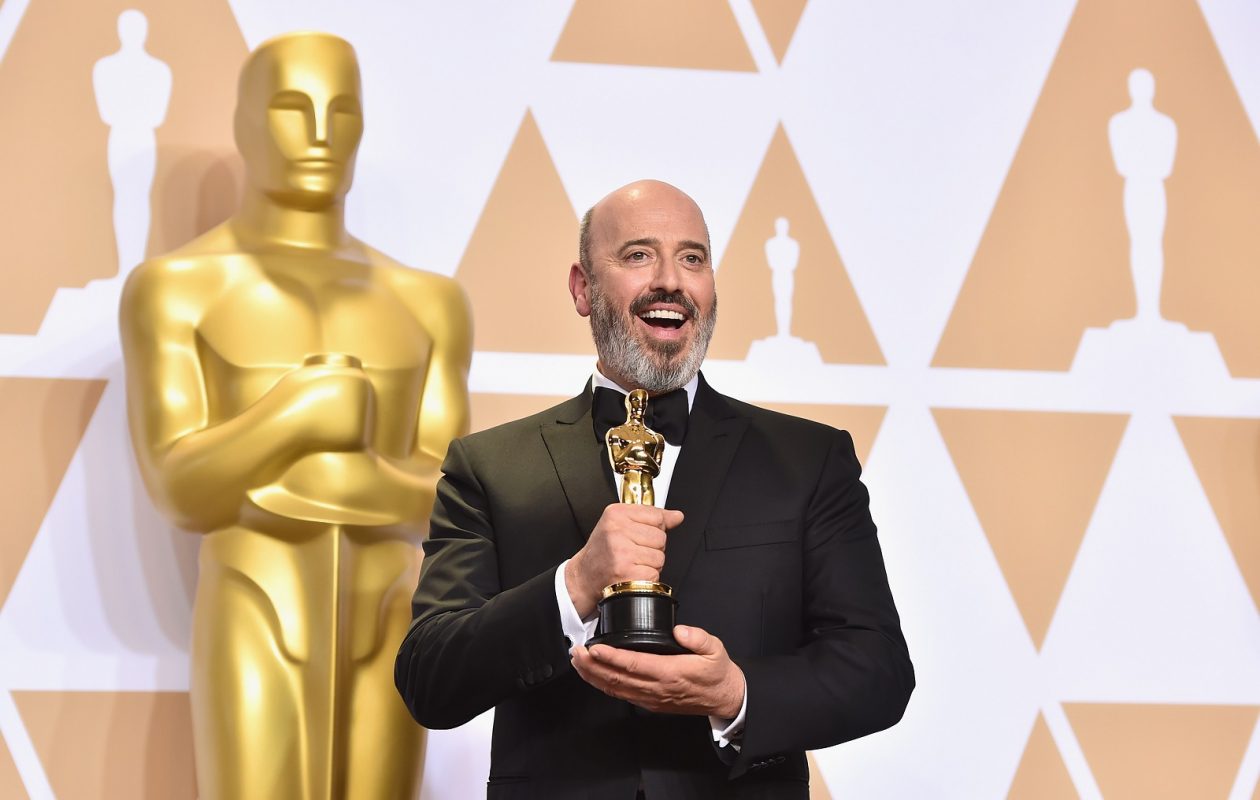
Academy Award Winner Craig Barron Attended the NFIFF
Spending eight years in the matte department of Industrial Light & Magic, the effects studio of George Lucas, Barron co-founded Matte World in 1988, later renaming it Matte World Digital. His title is founder and Visual Effects Supervisor.
Member of the Board of Governors of the Academy of Motion Picture Arts and Sciences (Visual Effects Branch) [2005-2014].
Co-chair with Paul Debevec, AMPAS Science & Technology Council [2014- ].
Biography
Craig Barron is an Academy-Award winning visual effects supervisor, entrepreneur, lecturer and film historian. For more than two decades, Barron has been innovating techniques to create cinematic illusions, contributing to the visual effects on more than one hundred films. Barron has served nine years as a member of the Academy Board of Governors, representing the visual effects branch and is a founding member of the Visual Effects Society. As of 2014, he is co-chair of the AMPAS Science & Technology Council.
Barron’s career began with the “Star Wars” visual-effects revolution when he joined Industrial Light + Magic in 1979 at age 18 (then the youngest person at ILM), and plunged into matte-effects photography for “The Empire Strikes Back.” He worked on such landmark productions as “Raiders of the Lost Ark” and “ET: The Extra-Terrestrial.” He was supervisor of photography of ILM’s matte department from 1984 to 1988. In honor of his cinematographic work, he was named associate member of the American Society of Cinematographers in 2002.
In 1988, Barron co-founded Matte World with matte painter Michael Pangrazio and producer Krystyna Demkowicz. The company won an Emmy in 1990 for outstanding visual effects for HBO’s “By Dawn’s Early Light.” Matte World provided matte painting effects, beginning with classic matte-painting and modeling techniques, and later became Matte World Digital to reflect newly available digital tools.
Matte World Digital’s work appeared in feature films, television, commercials, electronic games, and IMAX large-format productions. Clients included Martin Scorsese, Francis Ford Coppola, James Cameron, and David Fincher. Feature-film work ranged from the Oscar-nominated effects for “Batman Returns,” to “Zodiac,” “Hugo,” and “The Curious Case of Benjamin Button,” for which Barron won Oscar and BAFTA awards for best visual effects in 2009. After 24 years of service, Matte world Digital closed shop in 2012.
Barron independently directed and co-produced the science-fiction short, “The Utilizer” (based on a short story by Robert Sheckley), and a companion “making of” documentary. Both were broadcast on the Sci-Fi Channel in 1996. The show won a number of film-festival awards, including best visual effects at the Chicago International Film Festival.
Recognizing the importance of archiving classic visual effects work, Barron co-wrote with Mark Cotta Vaz the first comprehensive book on the history of matte painting, “The Invisible Art: The Legends of Movie Matte Painting” (Chronicle Books, 2002). The book won the outstanding book-on-film award from the Theatre Library Association of New York, and the Golden Pen award from the U.S. Institute for Theatre Technology.
Barron lectures at AMPAS classic-film presentations, often co-hosting with sound designer, Ben Burtt. Digging up lost artifacts, film outtakes, soundtracks and production photos, the pair present their findings and explain VFX and sound techniques created for such films as “Modern Times,” “The Adventures of Robin Hood,” and “Forbidden Planet.” In 2014, Barron and Burtt co-hosted “Hollywood Takes to the Air,” presenting rare footage compiled by Dick Grace, a silent-film stunt flier and daredevil. A rare screening of “Lilac Time” (1928) was shown, featuring Grace’s stunt work. Barron and Burtt have presented AMPAS programs on the Turner Classic Movies Network.
Barron worked as a visual effects supervisor at Tippett Studio in 2013, overseeing the creation and development of CGI environments for film, television, and electronic games. As of 2014, he is the creative director of Magnopus, a visual research and development company based in downtown Los Angeles. Magnopus crafts visual storytelling techniques in new ways for retail, educational, industrial and entertainment spaces. The company’s name is a consolidation of “Magnum Opus” (Latin for “Great Work”).
Filmography
The Curious Case of Benjamin Button
Titanic
Kundan
X-Men
Star Wars
Indiana Jones
Batman
The Truman Show
The Ring
Jurassic Park
The Goonies
Star Trek
Captain America
Hunger Games
Hugo
The Wolf of Wall Street
Terminator Salvation
And many more….

